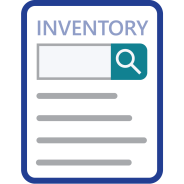
Choose from 5 options:
You must keep certain records for introductions of chemicals that are imported and subsequently exported, which you’ve categorised as exempted. You must provide these records within 20 working days if we ask for them.
Before you read this page’s content, make sure you’ve already read and understood information on our record-keeping overview page.
The type of records you must keep depends on whether you know the CAS number, CAS name, IUPAC name, or INCI name. Work through the information on this page to understand your record-keeping obligations for this type of introduction.
An introducer is taken to know the CAS number, CAS name, IUPAC name, or INCI name if it would be reasonably practicable for them to find out that number/name.
This means introducers must proactively try to find this information, including checking for it with their chemical supplier.
You will also need the following records:
your chemical isn’t listed on the Inventory with conditions of introduction or use that will be contravened
We'll accept a signed and dated declaration that these checks took place.
*unless it is introduced solely for use in research or analysis and the amount that you introduce in a registration year does not exceed 100kg.
Use your browser to print the record-keeping checklist content on this page by: